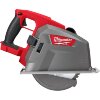I will never understand fires in the home being so detrimental.
Luckily, house fires are not incredibly common. Also, if you live in a city with a full-time FD, response times are pretty short, which means knocking a fire down quickly. If it's detected quickly, of course.
A number of States are now requiring NFPA 13D residential sprinklers. Many municipalities then amend the City code to exempt single and two family homes from 13D--it's a complicated circle. Fire resistance, as Troy points out, is not common in house building, especially y tract builders. That's because the materials are expensive, as are the labor hours required. So, they get skipped, or modified, or something.
Now, a person can improve on fire resistance in existing buildings. Even in just discrete areas, like around an RSC. (Get rock wool blown into the wall cavities will double a given wall's Resistance.)
Now, most RSC only really 'guarantee' to keep the contents under 200-240ºF for most of the duration claimed. Some use Type "X" gypsum board, as it will steam off its entrained water vapor, just like it would on your walls, to around 480-500ºF where the facing starts to fail. That's getting close to the 600ºF "flash over" point, too.



